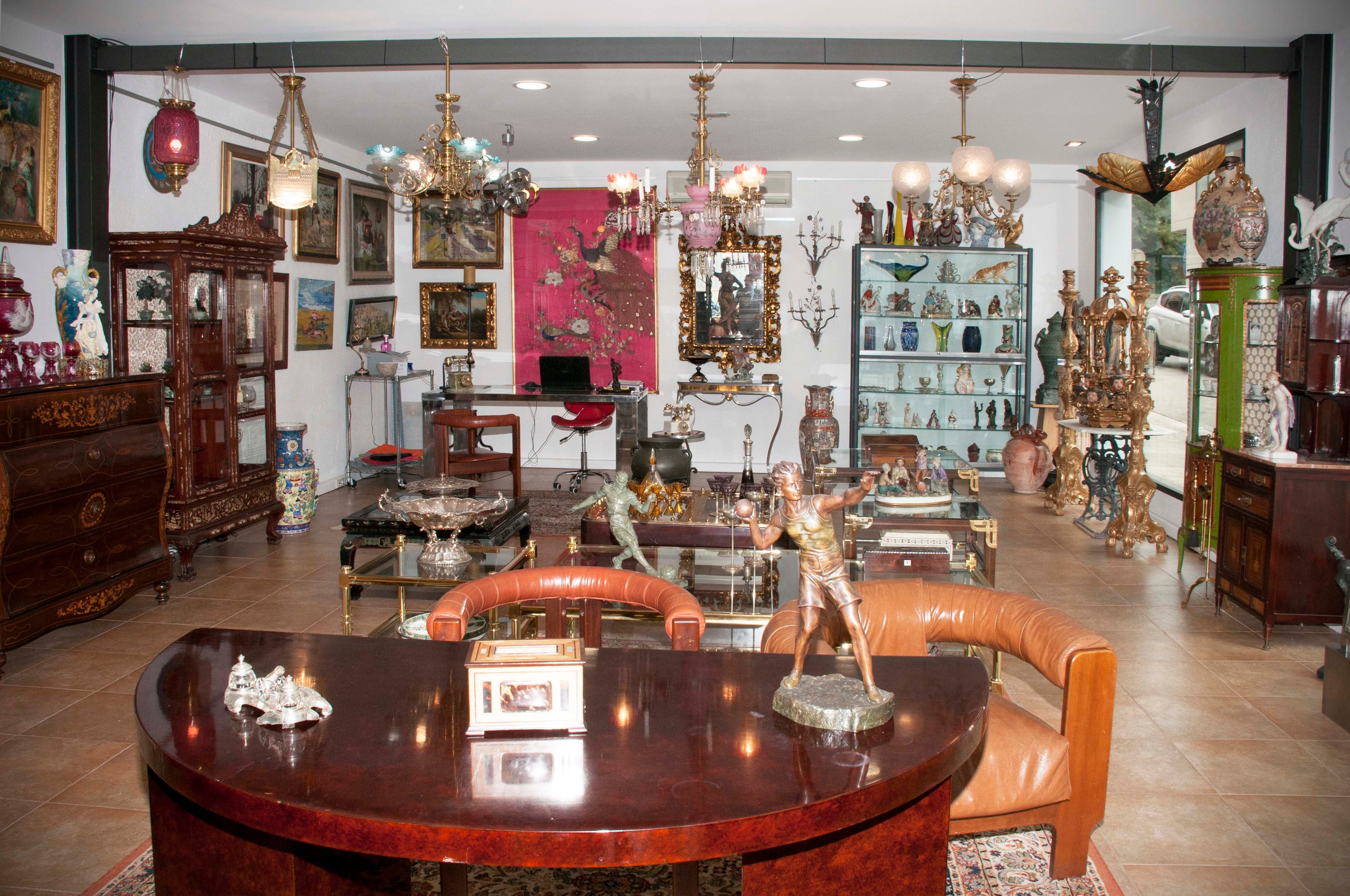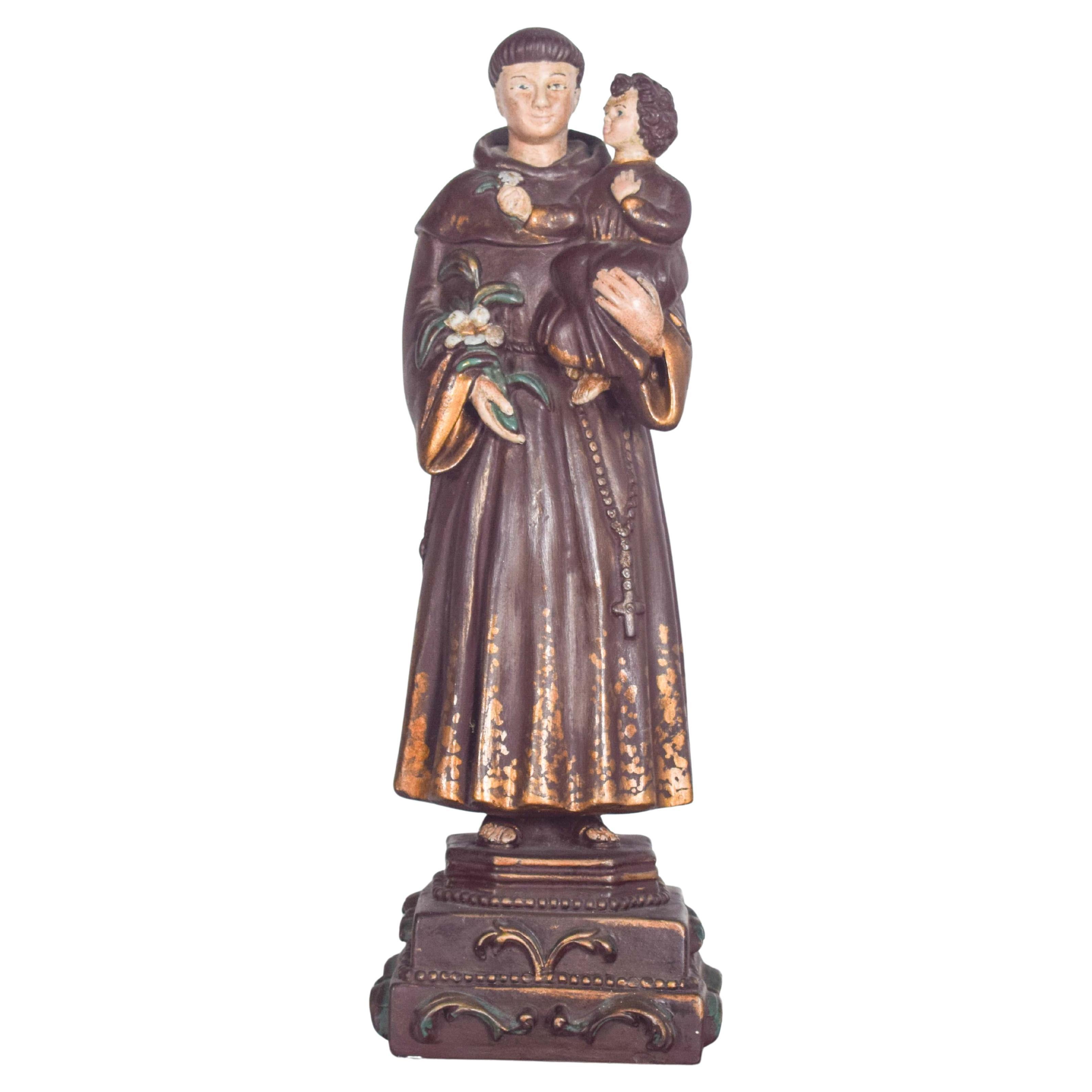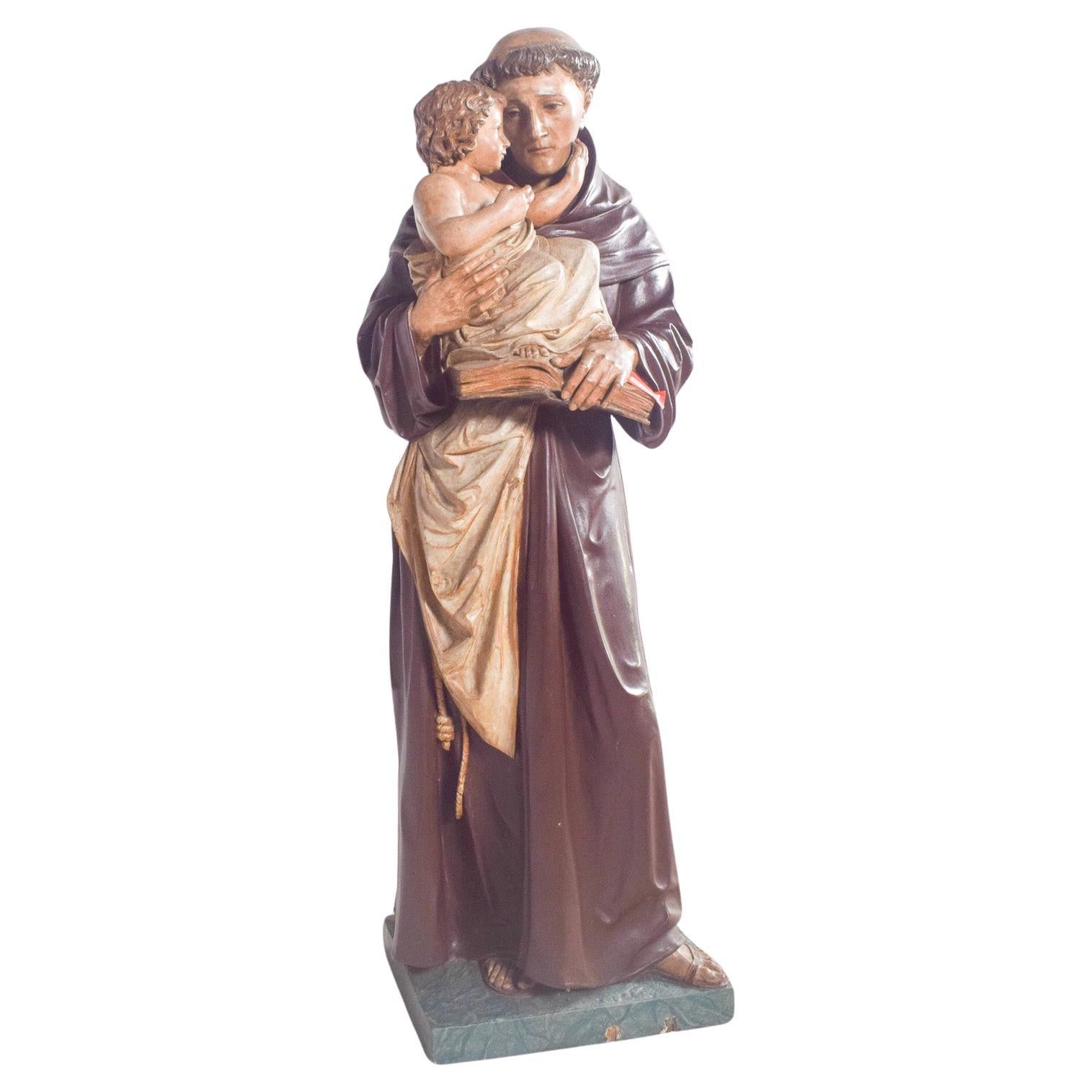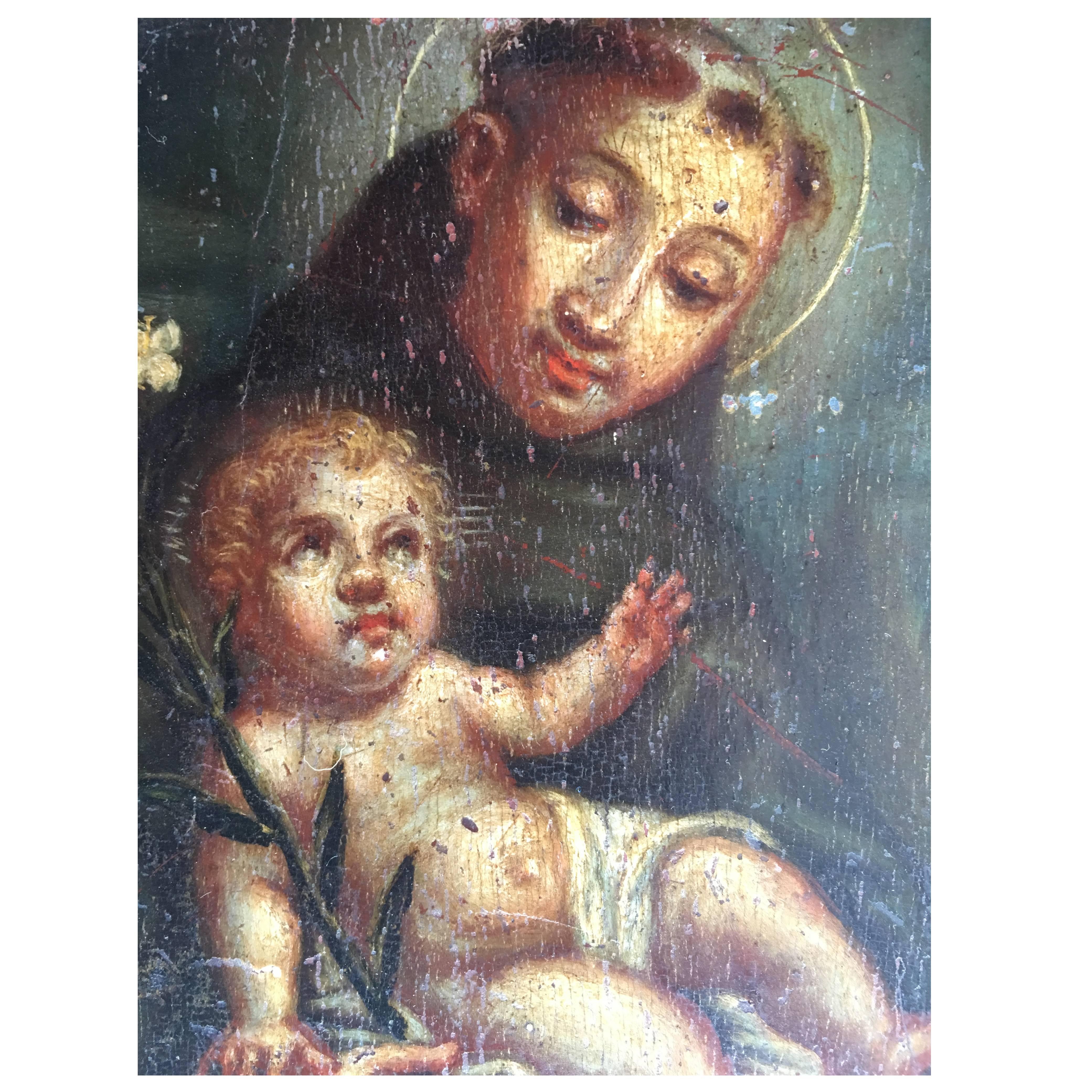Items Similar to Fine 19th Century Enamel on Porcelain Depicting Saint Anthony with the Christ Ch
Want more images or videos?
Request additional images or videos from the seller
1 of 9
UnknownFine 19th Century Enamel on Porcelain Depicting Saint Anthony with the Christ Ch
$716.16
£534.37
€600
CA$998.65
A$1,094.38
CHF 571.51
MX$13,151.46
NOK 7,144.85
SEK 6,738.73
DKK 4,567.90
About the Item
Fine 19th Century Enamel on Porcelain Depicting Saint Anthony with the Christ Child
Beautiful and finely detailed enamel painting on porcelain representing Saint Anthony of Padua with the Christ Child, a popular religious subject in Catholic iconography. This exquisite mid-19th century piece is notable for the delicacy of its brushwork and the smooth, luminous quality typical of high-quality painted enamels of the period.
The figures are depicted with great tenderness and precision, framed by soft tones and subtle modeling that highlight the emotional connection between the saint and the child. The porcelain plaque is in excellent condition, showing no visible cracks or losses, and is set in a later yet elegant wooden frame with reddish accents and molded contours.
Period: Mid-19th century
Technique: Enamel painted on porcelain
Subject: Saint Anthony and the Infant Jesus
Condition: Very good condition overall; the frame is slightly later
Dimensions (plaque): 18 x 12 cm
Dimensions (framed): 27.5 x 23 cm
This is a superb devotional artwork, ideal for collectors of sacred art, 19th-century European porcelain, or fine religious miniatures.
- Dimensions:Height: 10.63 in (27 cm)Width: 9.06 in (23 cm)Depth: 1.19 in (3 cm)
- More Editions & Sizes:18 x 12 cm (Edición única)Price: $716
- Medium:
- Period:
- Condition:
- Gallery Location:Sant Celoni, ES
- Reference Number:1stDibs: LU2801216551632

About the Seller
5.0
Vetted Professional Seller
Every seller passes strict standards for authenticity and reliability
Established in 1974
1stDibs seller since 2024
20 sales on 1stDibs
Typical response time: 17 hours
- ShippingRetrieving quote...Shipping from: Sant Celoni, Spain
- Return Policy
Authenticity Guarantee
In the unlikely event there’s an issue with an item’s authenticity, contact us within 1 year for a full refund. DetailsMoney-Back Guarantee
If your item is not as described, is damaged in transit, or does not arrive, contact us within 7 days for a full refund. Details24-Hour Cancellation
You have a 24-hour grace period in which to reconsider your purchase, with no questions asked.Vetted Professional Sellers
Our world-class sellers must adhere to strict standards for service and quality, maintaining the integrity of our listings.Price-Match Guarantee
If you find that a seller listed the same item for a lower price elsewhere, we’ll match it.Trusted Global Delivery
Our best-in-class carrier network provides specialized shipping options worldwide, including custom delivery.More From This Seller
View AllEscuela colonial mejicana siglo XVIII - San Antonio con el niño
Located in Sant Celoni, ES
Escuela colonial mejicana; siglo XVIII.
“San Antonio con el Niño”.
Óleo sobre tabla.
Medidas: 28 x 21 cm.
Gran pieza para coleccionistas de arte religioso de calidad
San Antonio de Padua...
Category
Early 18th Century Old Masters Figurative Paintings
Materials
Oil
Escuela Hispano-colonial (XIX) - Óleo sobre tela - San José con niño
Located in Sant Celoni, ES
Como pueden apreciar, la obra no va firmada
Se presenta enmarcada la obra
El estado de la obra es aceptable
Medidas obra: 73 cm. de altura x 50 cm. de ancho
Medidas obra enmarcad...
Category
1850s Old Masters Figurative Paintings
Materials
Oil
Virgen y niño con guirnalda - Óleo sobre tela
Located in Sant Celoni, ES
Sin firmar, la obra es de autor anónimo
El estado de la obra es bueno, aunque comentar que la tela está reentelada
Se presenta bien enmarcada la obra con un marco posterior a la pi...
Category
Early 19th Century Baroque Figurative Paintings
Materials
Oil
SANTA TERESA DE JESUS - CRISTAL PINTADO - FINALES SG XVIII -CORNOCOPIA ORIGINAL
Located in Sant Celoni, ES
Interesante cristal pintado que representa a Santa Teresa de Jesús de finales del siglo XVIII.
Tiene una falta en la parte superior del marco y pequeña rotura en la parte baja izqui...
Category
Late 18th Century Figurative Paintings
Materials
Acrylic
Escuela española (XVIII) - Óleo sobre tela - San José con el niño
Located in Sant Celoni, ES
Como pueden apreciar, la obra no va firmada, es de autor anónimo
Se presenta enmarcada la obra con un marco en madera policromada
El estado de la obra es bueno, solo comentar que e...
Category
Mid-18th Century Old Masters Figurative Paintings
Materials
Oil
San Francisco de Asís - Oleo sobre cristal
Located in Sant Celoni, ES
Interesante óleo pintado sobre cristal que representa a San Francisco de Asís,
pintado con un estilo Naif.
No esta firmado, solo va titulado.
Se presenta con su marco original de m...
Category
1850s Old Masters Figurative Paintings
Materials
Oil
You May Also Like
Sculpture of St Anthony with Child in Pottery
Located in Lisboa, Lisboa
Sculpture of St Anthony with Child. St Anthony is depicted wearing a brown cloak, typical of the Franciscans, with gold details and a cord around his waist. The Child Jesus is dresse...
Category
Antique Late 19th Century Portuguese Rococo Figurative Sculptures
Materials
Pottery
Sculpture of Saint Anthony With the Child, in Ceramic
Located in Lisboa, Lisboa
This ceramic sculpture of Saint Anthony with the Child is a beautifully crafted representation of devotion and purity. The figure stands tall, captured in a serene and gentle pose. S...
Category
Antique Late 19th Century Portuguese Rococo Figurative Sculptures
Materials
Ceramic
Saint Anthony with the Child Ceramic Sculpture
Located in Lisboa, Lisboa
Saint Anthony with the Child, ceramic sculpture. Saint Anthony wears the traditional brown Franciscan habit, with the characteristic three-knotted cord around his waist. The Baby Jes...
Category
Antique Late 19th Century Portuguese Rococo Figurative Sculptures
Materials
Pottery
Saint Anthony of Padua with the Infant Jesus. Oil on canvas. Spanish school, 18t
Located in Madrid, ES
Saint Anthony of Padua with the Infant Jesus. Oil on canvas. Spanish school, 18th century.
Oil on canvas showing Saint Anthony of Padua (Lisbon, August 15, 1195 - Padua, June 13, 12...
Category
Antique 18th Century Spanish Neoclassical Religious Items
Materials
Other
18th Century Original Oil on Canvas Painting of St Anthony of Padua and Christ C
Located in Round Top, TX
Original oil on canvas painting of St. Anthony of Padua and the Christ child, just under 3' tall.
Unframed, no signature/unknown artist.
Canvas has heavy craquelure, old cracks/crea...
Category
Antique Early 18th Century Spanish Paintings
Materials
Canvas, Wood, Paint
Original Oil on Panel of St. Anthony of Padua , by Unidentified Artist
Located in Miami, FL
Original oil on panel of Saint offering the Child, by an unidentified artist.
--This painting represents St. Anthony of Padua. The scene is one that is often chosen to represent ...
Category
Antique Mid-17th Century Spanish Baroque Religious Items
More Ways To Browse
Antique Catholic
19th Century Oil Paintings Religious
Antique Enamel Painting
Painting On Porcelain
Christ With Child
Oil On Porcelain
Saint Anthony And The Child
Christ Porcelain
Paul Elie Gernez
Pensive Girl
Pierre Dupuis
Pizza Painting
Redhead Portrait
Romance Cover Art
Sci Fi Painting
Space Invader Art
Spanish Old Master Paintings
Stained Glass Cartoon









